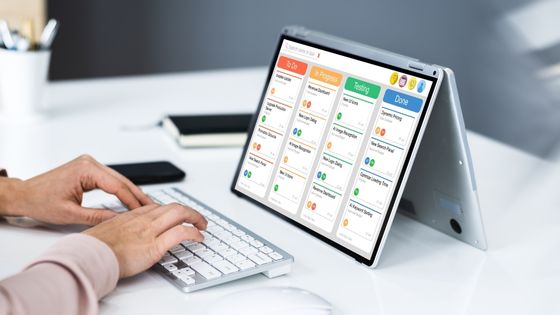It isn’t easy to manage employees’ attendance. The overall attendance management software has many parts. As with any system, they all need to be interconnected to work properly.
Collecting Attendance Data
A time punch is a log that records an employee’s arrival or departure from work. A log entry should contain at least the employee’s ID and a timestamp. The door information and movement type (in/out) can be useful for establishments with multiple entry points.

An old method of keeping track of attendance data was to keep a paper-based attendance record and allow employees to mark their attendance each day. There are many ways to capture attendance data today, including mobile-based attendance recording and biometric hardware devices.
It is crucial to accurately capture daily swipe data from employees, as every aspect of the business will be affected by this data. Because this is a daily activity, its volume will be directly proportional to how many employees are present and how often they move around the premises.
Automated methods for capturing and processing attendance data reduce administrative effort and costs.
An organization’s attendance policy defines the working hours and shifts of employees. It also specifies the disciplinary rules. These sections make up an attendance policy:
- Definition of shift and policy for shifting rotation
- Regularization policy
- Policy on Overtime, including eligibility and payout rates
- Violations of the rules can result in severe penalties
- Calendar for work, including holidays and off days
The attendance policy must be in place to process raw attendance swipes and calculate actual hours worked, Overtime, late-coming, etc.
Shift & Production Planning
Some organizations have shift rostering and production planning as regular activities. Either HR managers or team managers usually do these.
A shift roster lists employees working on a particular shift over a specified period (week, month). The roster is then sent to the employees. Shift rotation ensures employees can switch between different shifts, such as the morning or night shifts.
Attendance Processing
Processing attendance is similar to making tomato soup.
Are three ripe red tomatoes equal to a bowl of hot tomato soup? It’s not.
To make a tasty soup, we need to wash, purée, boil, and simmer the red tomatoes. Salt, pepper, and some cream are also necessary.
The raw attendance swipes are not sufficient. We need other information to process attendance swipes and to do computations to get our results. This information is required:
- The attendance policy (see above), in all its dimensions
- The shift roster
- Holiday Calendar
- The employee’s leave status for the day
- Any special permissions or exceptions that the employee may need
Daily Vs. Monthly Processing Monthly Vs. Daily Processing
Organizations without automated systems would prefer to process attendance once per month. Some companies do it weekly or daily. Daily attendance processing has the advantage over monthly processing in that employees get immediate feedback which leads to better policy enforcement.
It is impossible to know the exact attendance status of an employee in a matter of days. Consider an example: An employee who doesn’t show up to work Monday morning. This cannot be regarded as an “unauthorized absence”. The employee could apply for sick leave two days later.
You can keep on processing attendance throughout the month since a violation from Monday could be regularized one week later.
Organizations without automated systems would rather process attendance monthly than daily due to the enormous effort and burden. You also lose out on policy enforcement effectiveness. Computerized systems can eliminate the need to do this and allow for real-time attendance processing every day.
Attendance & Overtime Registers
After processing attendance, we receive a detailed employee’s attendance record for the entire month or a single day. A muster roll is an attendance record of all employees for all the days in a given month.
The total Overtime worked by an employee during a month is called an overtime register. This information calculates overtime payments and flows to the payroll administrator.
Participation in Violations and Exceptions
After we have processed attendance, it is necessary to verify that employees follow the attendance policy. We may notify employees if there are any policy violations during a grace period. We can also impose sanctions for violations.
There may be multiple violations that could be flagged. You can flag, for example:
- Habitual late coming (with a grace period of 2 times per calendar month)
- Habitual early departure
- Three days of continuous absence or more
- An insufficient number of hours worked per week, for example, compared to the 40 required hours.
The administrator should share this feedback with employees and managers at the earliest. Sometimes, the deviation could be legitimate, such as a device malfunction or delay due to official work.
Employees can easily recall what happened and give reasons. It can be difficult to recall the reason for a violation after a month. These delays often lead to disputes and employee dissatisfaction in the attendance process.
Regularization of Attendance
A worker could be present during a workday but still be flagged absent, late, or without a punch in or out for that day. These false positives can occur for many reasons.
Imagine how annoyed an employee would be if they put in a long day of work but are not recognized as a regular or late-comer. This is like being accused of time theft or being less committed to work.
It is possible to inform the employee of an anomaly in their records and ask them to rectify it by the end of the month. The employee is allowed to correct the problem without being subject to any negative remarks or consequences.
Employees will be more likely to give feedback sooner than a month ago. It can be difficult to recall and justify why someone was late for work one month ago. Most employees feel that there was a good reason, but they don’t know how to explain it. They will feel like the stupid system is victimizing them. Some employees may be absent, but they claim forgetfulness to be the reason.
Daily attendance processing is a good idea for all of these reasons. These issues can be notified to employees immediately. We also can enforce the policy with rigour. It encourages accountability without creating dissatisfaction and damaging the employer’s brand.
Finalization
Attendance regularization is required in the event of false positives. The final attendance status of the employee is not determined until the incident has been resolved. The employee is like Schrodinger’s cat. They can be both present and absent simultaneously.
We must decide on these cases when the attendance period ends and prepare payroll advice for the month.
Every exceptional case is reviewed according to the attendance policy. Each case will be assessed and penalized accordingly. Management has the right to pardon or overrule certain cases.
Other policy violations are at the company’s discretion and will be determined by the company. Let’s say, for example, that an employee is consistently late three days consecutively. We could punish the employee in many different ways.
- Deduct half a day from the leave balance
- Deduct half a daily wage from the salary
- A fine of Rs 500 will be imposed, regardless of whether the wages were earned.
Finalization is where it all begins. If policies aren’t enforced, and there aren’t consequences for violating them, it can lead to indiscipline, disrespect, and a lack of respect for the company policies. Inconsistent enforcement can lead to feelings of injustice, bias, and discontent.
Payroll and Leave Inputs
The finalization process outputs a list of LOP and leaves adjustments for all employees during the attendance period.
After deductions, the leave inputs should adjust the employee’s leave balances.
Payroll inputs should decrease the monthly working days and lower the salary. Any fines must be deducted from the gross salary.
Reporting and Analytics
There are various state and central government regulations that require the maintenance and updating of muster rolls and wage and leave data. A prescribed attendance register must be kept for all employees for each month.
The organization should review its monthly attendance report and gain insight. An employee’s absence from work is a serious concern and should be investigated. Absenteeism at a general level is even more concerning. If it isn’t addressed, it could harm the organization’s overall health.
The attendance analysis should be performed at the monthly and org-wide levels and for longer periods and can be drilled down to the individual, departmental, and team levels. The data should be correlated with environmental factors such as the holiday season or year-end.

















